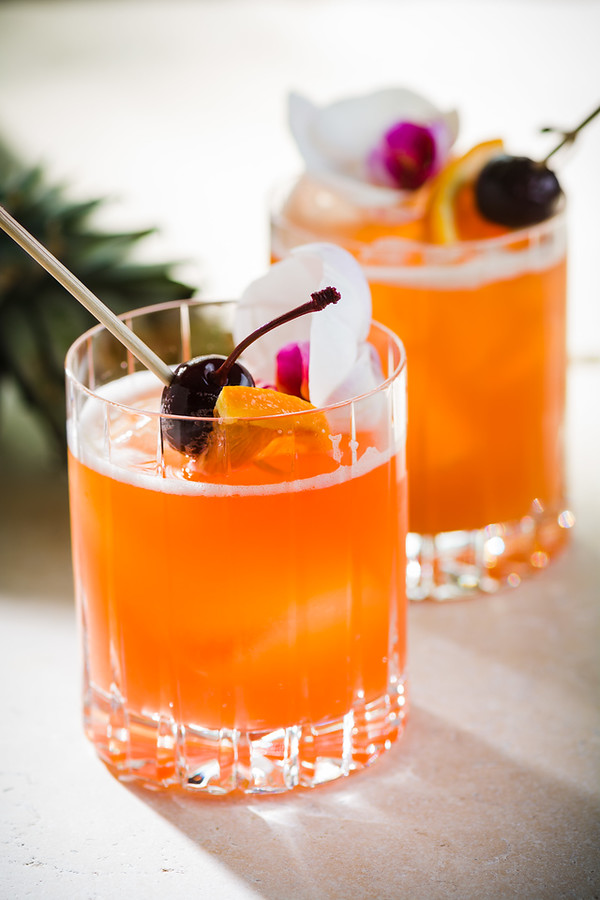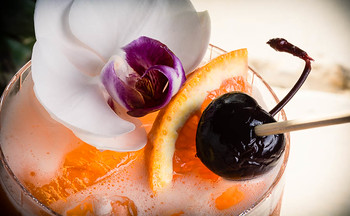Nothing says “jungle movie” like a sound track with plenty of evocative “ka-dawing” bird calls and monkey yelling. Throw in the occasional tiger roaring in the darkness, and you have a convincing, if clichéd, aural impression that transports us right into the exotic elsewhere of the tropical jungle.
When I hear a soundtrack done well, I can feel the heat. I can smell the mud and the trees.
When it’s done right, the movie soundtrack is a powerful thing.
Of course, it can be done wrong, and all that power flows in the opposite direction.
Which brings us to my favorite of all tropical bird calls: the Common Loon. I can just picture some clueless B-movie sound guy all excited about this eerie, haunting bird sound, just the thing to make the jungle even more alien, but for anyone who lives in northern lakelands, that familiar call overlaid on tropical visuals is pure cognitive dissonance, the trigger for a good belly laugh. So much for being transported to another world.
But that’s why the Loon is one of my favorite “jungle birds.”
My other favorite isn’t even a real bird—it’s a tiki concoction. At least it does have the distinction of actually being from the tropics.
The Jungle Bird is unique among tiki drinks of the post-war “classic” tiki era. The formula doesn’t look much like tiki at all—no long list of exotic fruits and syrups, and no blend of two or three disparate rums.
Strangest of all is its hallmark ingredient: unique among traditional tiki formulas, the Jungle Bird includes Campari.
The drink is also interesting because it appears so late in the tiki era. According to Jeff Berry, it first appeared at the Kuala Lumpur Hilton’s Aviary bar, sometime around 1978.

It’s a clever experiment, a considerable break from the Trader Vic and Don the Beachcomber-inspired creations that preceded it. Minimalist and avant garde, it’s more like a modern “cocktailian” exploration than a traditional tiki presentation.
The Jungle Bird
- ¾ oz Campari
- ½ oz fresh lime juice
- ½ oz sugar syrup (demerara syrup)
- 4 oz fresh unsweetened pineapple juice
- 1½ oz dark Jamaican rum (Myers’s Original Dark, Smith and Cross)
Shake well with plenty of ice cubes. Pour unstrained into a double old-fashioned glass. Garnish with an orchid and a cocktail cherry speared to lemon and orange wheels.
The key to the Jungle Bird is the pineapple juice. Fresh juice has a light, soft, round flavor, compared to the sharper, more aggressive canned juice, and you’ll need roughly 4 ounces to balance the rum and Campari. Juicing pineapples can be a pain even if you have the luxury of a good juicer, but a fresh-juice Jungle Bird is totally different from, and much superior to, one made from canned juice.
(If you find yourself using canned juice, you will likely want to cut the amount of pineapple way back. I’ve seen recipes with as little as 1½ or 2 ounces of juice, and I suspect they’re based on canned juice.)
 The classic dark Jamaican rum is the molasses and caramel-laden Myers’s Original Dark, and it seems to be the best flavor choice for the Jungle Bird. If you’re a fan of the more funky Smith and Cross, you’ll find that it makes a great partner with the pineapple and Campari. I often use Appleton 12 as a go-to Jamaican, but I don’t recommend it here; it doesn’t have the “heavy flavor” that this drink seems to need.
The classic dark Jamaican rum is the molasses and caramel-laden Myers’s Original Dark, and it seems to be the best flavor choice for the Jungle Bird. If you’re a fan of the more funky Smith and Cross, you’ll find that it makes a great partner with the pineapple and Campari. I often use Appleton 12 as a go-to Jamaican, but I don’t recommend it here; it doesn’t have the “heavy flavor” that this drink seems to need.
Even with the heavy molasses of the Myers’s or the funk of the Smith and Cross, the fruit is still the main driver of both scent and taste in the Jungle Bird.
The initial nose is mostly about pineapple, with just a faint note of citrus, which probably comes as much from the twist and garnish as from the lime in the drink itself.
The first sip is pineapple, with a bit of sweetness. As you might expect of this formula, it’s less sweet than many tiki formulas, and the herbal and bitter notes of the Campari quickly appear. The first swallow seems to be dominated by Campari, but, curiously, the Campari seems to recede in later swallows, and allows the earthy notes of the rum to come through.
My main impression from the Jungle Bird is that it is driven by the pineapple and just a bit of lime tartness. It suggests that the balance of the pineapple and the Campari is the whole trick of this drink.
Separating reality from imagination is always an interesting exercise, and the Jungle Bird presents a pleasant way to spend some time pondering it. On one hand, we have the marvelous Loon converted to a faux tropical bird, and it probably gets away with it sometimes.
On the other hand, in the world of tiki—unabashedly a faux Polynesian drinking environment—we have a formula called the Jungle Bird, which doesn’t look like “real” tiki, but certainly tastes like it, and which may be one of the last carriers of the tiki banner before that fashion collapsed entirely.
So here’s to Jungle Birds—the “Jungle Bird” Loon elevated to faux stardom by unknown B-movie soundmen, and a tiki gem called Jungle Bird projected to real prominence by an unknown Malaysian barman in 1978. Cheers!
“Chasing the Jungle Bird” at cold-glass.com : All text and photos © 2016 Douglas M. Ford. All rights reserved.

Thank you for this recipe
May I reblog it in my Carnet de Recettes du Web, there is “In ENGLISH” recipes too, find them with an 🇬🇧 flag in the title, just a click there and you will find all of them : carnetderecettesduweb.wordpress.com : In English 🇬🇧Recipes ?
Yes, you certainly may reblog. Thanks for asking.
It’s better to ask before with “courtoisie” – Thank you
this sounds great. I can’t recall the movie title at the moment but there was one that had the usual jungle noises (including the loon :) ) and then had the classic noises of the Three Stooges blended in. I believe it was some type of a spoof but it was hilarious on how well those noises were part of the background.
Stooges… I’m trying to imagine how that sound track works. I’d love to see that movie sometime. Thanks.
Ahhhh, Martin Denny and Quiet Village. After I make up the next batch of Sangria, I’m going to go find a pineapple. I almost never drink rum but happen to have a bottle stashed away to make Wassail…this sounds very tasty. I must also add I love your column? blog? whatever this Cold Glass is…the biggest trouble is having all the specific liquors involved in some of these. I also must say I had the best Corpse Reviver at the SF Airport in the Lark Creek Grill in the Virgin America terminal.
A good Corpse Reviver in an airport lounge? Whooda thought…? That’s excellent.
I’m glad you enjoy Cold Glass. The specific liquors listed in the formulas are usually just notes on the ones I used to make the drink, and that worked well for me. Generally, you can interpret them more as indicators of the type or style of rum or whiskey or whatever that works well in the drink.
Thanks for commenting. I hope you found your pineapple!
Holy smokes!! My kitchen looked like a hurricane had hit it when I got through trying to make this drink!! First off…how the heck do you juice a pineapple? For ease of handling I got fresh pineapple strips in a package from Trader Joes. Figured I’d food process some pieces and press the juice out…nope. I did get a really nice pineapple whip but only about 2 oz of juice. I’d squeezed 4 limes [they were small and a bit old but I did get enough for 2 drinks]. So I have the rum and the Campari in a measuring glass – for 2 drinks – and have to look up demerara sugar. Nope, haven’t got that and I did have simple syrup but though I’d just substitute half the amount [for 2] and use Damiana, which is what we use in Margaritas. I knew it might add a bit of bittersweet to the Campari, but my husband kept asking me if I wanted a martini while I was making this drink!! So I still needed the juice . I had my 2 oz of FRESH pineapple juice and thought, what the heck, I’ve got to get this done, so I used not from concentrate orange juice – 6 ounces. This much for 2 drinks won’t fit in the cocktail shaker!! So I used a quart jar to shake it all up and foolishly thought I’d just put the strainer lid from the cocktail shaker over it to pour…Weeeellllll, that didn’t work so I lost about an ounce of the drink and ended using the strainer I’d used to try to squeeze the pineapple whip into juice…I took a picture of the kitchen after but I can’t figure out how to send it to you so you’ll just have to take my word for the incredible use of about everything in my kitchen but real pots and pans!! I guess being COMPLETELY prepared is the watchword for mixology. I might try this one more time with Dole juice or TJs little 4-pack of small juice cans, just to see how it tasts with pineapple rather than orange juice, but I think this will not become my rave-fave summer drink!
Sounds like quite an adventure, Linda. Yes, fresh pineapple juice can be a problem. I’ve never seen “fresh” pineapple juice in the grocery. I suspect that for most of us, it has to be canned juice. Fortunately, my bride got me a power juicer some time back, so I’m in luck—I really don’t like the tart, metallic taste of the canned products. Not everyone is as sensitive to that flavor as I am, so the canned might work well for you, which would make everything easier. In fact, this would be a very simple drink to make if the canned product is okay.
I had to look up Damiana; sounds like an interesting product, and I can believe it would go well as a syrup substitute in the Jungle Bird. Thanks for the idea. And for the story. (My hat is off to your husband for offering the martinis.)
Since I had the Jungle Bird for the first time last summer I consider this tiki something like yet one Mai Tai 8) I mean – my favorite tiki. Glad to read that your enjoy the cocktail too.
Thanks. Jungle Bird vs. Mai Tai, yes, that’s a tough choice.